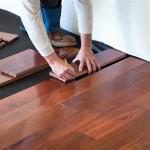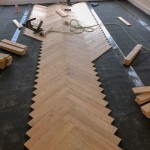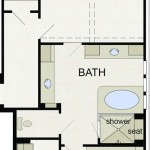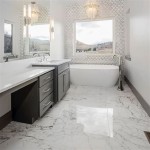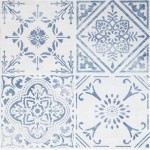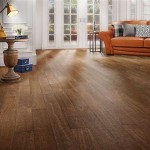Waterproof Rugs: Protecting Wood Floors from Moisture Damage
Wood floors offer a timeless aesthetic, bringing warmth and elegance to any interior space. However, they are susceptible to damage from various sources, with moisture being a significant threat. Spills, pet accidents, tracked-in water, and even high humidity can lead to warping, staining, and mold growth, potentially requiring costly repairs or replacements. To mitigate these risks, waterproof rugs provide a practical and stylish solution, offering a protective barrier against moisture while enhancing the overall decor.
The concept of a waterproof rug relies on materials and construction techniques that prevent liquids from penetrating the rug and reaching the wood floor beneath. Unlike water-resistant rugs, which may offer some protection against minor spills, waterproof rugs are designed to be completely impervious to moisture, providing a reliable safeguard against substantial liquid exposure. This capability is particularly valuable in high-traffic areas, kitchens, bathrooms, mudrooms, and homes with pets or young children.
Selecting the right waterproof rug for wood floors involves considering several factors, including the materials used, the construction methods employed, the rug's size and style, and the specific needs of the space. Understanding these aspects will ensure that the chosen rug effectively protects the floor while complementing the room's design.
Understanding Waterproof Rug Materials
The waterproof nature of a rug primarily depends on the materials used in its construction. Several synthetic materials are commonly employed due to their inherent water-repellent properties. These materials not only block moisture but also offer durability and ease of maintenance.
Polypropylene, also known as olefin, is a synthetic fiber widely used in waterproof rugs. It is highly resistant to water, stains, and fading, making it an excellent choice for areas prone to spills and moisture. Polypropylene rugs are relatively inexpensive and easy to clean, often requiring only a simple wipe-down with a damp cloth. A key advantage of polypropylene is its resistance to mold and mildew growth, further protecting the wood floor from potential damage.
Polyester is another popular synthetic material used in waterproof rugs. It offers similar advantages to polypropylene, including water resistance, stain resistance, and durability. Polyester rugs are often softer to the touch than polypropylene rugs, providing a more comfortable feel underfoot. They are also known for their vibrant colors and intricate patterns, making them a versatile option for various design styles.
Nylon is a durable synthetic fiber that can be treated to become waterproof. While nylon itself is not inherently waterproof, it can be coated or treated with a waterproof backing to achieve this property. Nylon rugs are known for their resilience and ability to withstand heavy foot traffic. They are also resistant to abrasion and crushing, making them suitable for high-use areas.
In addition to the primary rug material, the backing of a waterproof rug plays a crucial role in preventing moisture penetration. Common backing materials include rubber, vinyl, and PVC. These materials form a solid barrier that prevents liquids from seeping through the rug and reaching the wood floor. The backing should be securely attached to the rug fibers to ensure complete waterproof protection.
Construction Methods for Waterproof Rugs
The construction method used to create a waterproof rug is as important as the materials. The construction process determines how tightly the fibers are woven or tufted together, which affects the rug's ability to resist water penetration. Several construction techniques are employed to create waterproof rugs, each offering different levels of water resistance and durability.
Flatweave rugs are constructed by interlacing warp and weft threads, creating a flat, even surface. These rugs are typically thin and lightweight, making them easy to move and clean. Flatweave rugs can be made waterproof by using water-resistant materials and a waterproof backing. The tight weave of these rugs helps to prevent liquids from penetrating the surface.
Tufted rugs are created by inserting yarn loops into a backing material. The loops are then cut or left uncut, creating a pile surface. Waterproof tufted rugs are often made with synthetic fibers and a waterproof backing. The density of the tufts and the quality of the backing material contribute to the rug's overall waterproof performance.
Woven rugs, also known as knotted rugs, are constructed by tying knots of yarn onto warp threads. This method creates a dense and durable rug with a raised pile. While woven rugs are typically made with natural fibers like wool, synthetic versions are available that offer waterproof properties. A waterproof backing is essential for preventing moisture penetration in woven rugs.
Regardless of the construction method, the seams and edges of a waterproof rug should be carefully sealed to prevent water from seeping in through these vulnerable areas. Binding or serging the edges with a waterproof thread or sealant can provide an extra layer of protection.
Selecting the Right Waterproof Rug for Specific Needs
Choosing the right waterproof rug for wood floors requires careful consideration of the specific needs of the space and the potential sources of moisture exposure. Factors such as the rug's size, style, color, and intended use will influence the selection process.
In high-traffic areas such as entryways and hallways, durable and stain-resistant waterproof rugs are essential. These rugs should be able to withstand heavy foot traffic and frequent cleaning. Darker colors and patterns can help to conceal dirt and stains, reducing the need for frequent maintenance.
For kitchens and bathrooms, waterproof rugs should be highly resistant to water and spills. Consider rugs with non-slip backings to prevent accidents on wet floors. Smaller rugs or runners are often suitable for these spaces, providing targeted protection in areas prone to moisture exposure.
In homes with pets, waterproof rugs can be a lifesaver when dealing with accidents and tracked-in dirt. Look for rugs that are specifically designed to be pet-friendly, with stain-resistant and odor-resistant properties. Machine-washable rugs are a convenient option for easy cleaning.
When selecting a waterproof rug, consider the overall style and decor of the room. Choose a rug that complements the existing color scheme and furniture. Waterproof rugs are available in a wide range of styles, from traditional to contemporary, allowing you to find the perfect match for your aesthetic preferences.
The size of the rug should be appropriate for the space. In living rooms, a large area rug can define the seating area and anchor the furniture. In bedrooms, smaller rugs can be placed beside the bed or in front of a dresser. Ensure that the rug is large enough to provide adequate protection to the wood floor underneath, but not so large that it overwhelms the room.
Before purchasing a waterproof rug, it is advisable to read reviews and compare different brands and models. Look for rugs that are explicitly labeled as "waterproof" and that have a proven track record of performance. Consider any warranties or guarantees offered by the manufacturer.
Proper maintenance is essential for maximizing the lifespan and effectiveness of a waterproof rug. Regularly vacuum the rug to remove dirt and debris. Clean spills and stains promptly with a damp cloth or sponge. For stubborn stains, use a mild detergent and follow the manufacturer's instructions. Avoid using harsh chemicals or abrasive cleaners, as these can damage the rug's fibers and waterproof backing.
Periodically lift and inspect the rug to check for any signs of moisture buildup or damage to the wood floor underneath. If moisture is detected, address the source of the problem immediately and allow the rug and floor to dry thoroughly. Rotate the rug regularly to ensure even wear and prevent fading.
By carefully selecting and maintaining a waterproof rug, homeowners can protect their wood floors from moisture damage while adding style and comfort to their living spaces. The investment in a quality waterproof rug can save money in the long run by preventing costly repairs and replacements. The combination of appropriate materials, durable construction, and diligent maintenance will ensure that wood floors remain beautiful and protected for years to come.

Waterproof Rug Pad

Bohemian Flowers Chair Mat Beige Wood Floor Protection Orange Modern Decoration Autumn High Waterproof Etsy

Hashim Art Mat Brown Vinyl Protective Persian Turkish Design Waterproof Floor Area Rug Home Ideas Bathroom Kitchen Etsy

Rug Protector Mat Clear Pvc Waterproof Rectangular Pad For Wooden Floor Protection Non Slip Plastic Door Area

Outdoor Rugs For Patios Waterproof Reversible Garden Rug Portable Comfortable Woven Geometric Carpet

Outdoor Rugs For Balcony Or Patio Waterproof Rugyourhome

Non Slip Waterproof Kitchen Door Mat Home Floor Rug Carpet Anti Oil Easy Clean M Ebay

Waterproof Kitchen Rug Anti Fatigue Cushioned Runner Floor Mat Etsy

Meyjey 6 X9 Reversible Waterproof Rug For Outdoor Patio Camping Rv Made Of Plastic Orange Walmart Com

Rustic Old Wooden Board Print Waterproof Outdoor Rug Brown Wood Grain Area Ebay


